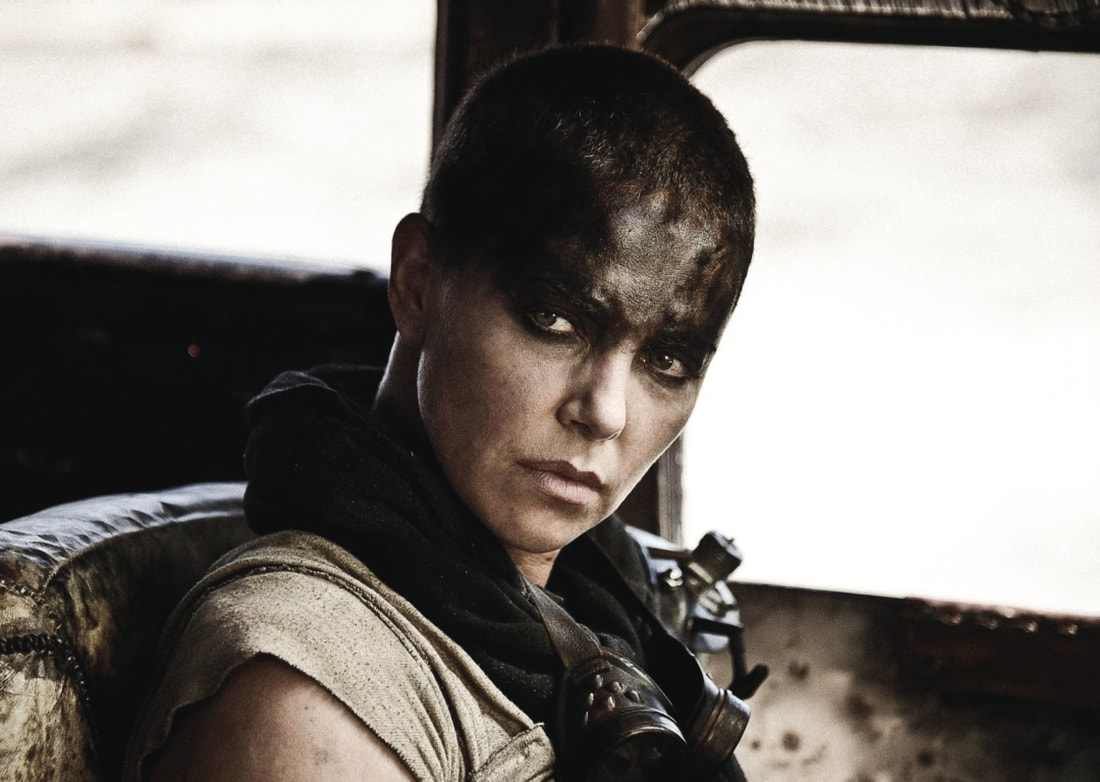ARTICLE / SHORT READCUT TO [wrath]
|
BY Meghan Hehir
|
Upon the release of MAD MAX: FURY ROAD (George Miller 2015), lifelong fans of the franchise were surprised by strong themes of feminism and sisterhood within the reboot. Despite the series being eponymous, many felt that Max Rockatansky (Tom Hardy) was demoted to a side character in favour of Imperator Furiosa (Charlize Theron). Her mission to free the sex slave “Wives” of dictator Immortan Joe (Hugh Keays-Byrne) becomes the driving force of the narrative. Furiosa, one-armed and sporting a buzzcut, is not your 21st century “action babe”, but more reminiscent of the great leading ladies in 1980s action films such as Ellen Ripley or Sarah Connor. Her quest to free the Wives from their life of suffering and abuse initiates a war of the roads and the journey unleashes something within all of them.
Previously, many leading feminist characters were cushioned by their femininity; they were petite and pretty but sharp and sassy. In the 21st century, more assured, headstrong women have been found unlikable by audiences, from fictional characters like Brie Larson’s Carol Danvers in CAPTAIN MARVEL (Anna Boyden and Ryan Fleck 2019) to modern celebrities. Larson, and the film itself, was heavily criticised for a multitude of reasons, ranging from the her “not smiling enough” in the trailer, to being misquoted after saying her press days were “overwhelmingly white male”, and deciding to make sure that they were more inclusive. There was huge backlash from male Marvel fans, who took to review sites like Rotten Tomatoes to purposefully log 1 star reviews, despite not having seen the film, in a bid to tarnish CAPTAIN MARVEL’s reputation. In a woman’s world, anger is weakness. But not for Furiosa. We are introduced to Furiosa via a close up of the nape of her neck. Branded on it is the mark of tyrannical overlord Immortan Joe: thick, pink, and scarred. What is interesting here is that little of her backstory is revealed; no explanation or reasoning as to how she ended up in her current situation is presented. We must piece together what we know about Joe, the Wives, and the society they live in. This is perhaps even more terrifying, as the pain she went through is only limited by our imagination. The one piece of evidence we have is the brand mark on her neck. One can only imagine how long she had to endure being the perfect expected vision of femininity, quiet and well-behaved, before she could escape. The events of MAD MAX: FURY ROAD take place after her suppressed rage has bubbled to the surface. She no longer needs to control it. She is free and her rage liberates her. This idea of liberating rage is infectious. Towards the end of the first act, Furiosa and the Wives unwillingly cross paths with Max. When Furiosa attacks Max after he demands water and their bolt cutters, the Wives grab the chain attached to his muzzle and pull him back, attempting to assist. Just like Furiosa, the Wives had been forced into obedience their whole lives. Now they are free, the suppressed rage has risen to boiling point, and they can let it take control. The rage has been passed on, empowering others in their new-found freedom. Anger in women is not as over-dramatic as the media would suggest. What is often perceived as an unlikable and vulnerable emotion is presented in MAD MAX: FURY ROAD as a cathartic and liberating experience for women. For Furiosa specifically, rage is not her saboteur, it is her tool. When utilised, rage strengthens her and the women around her. more WRATH >>> |


